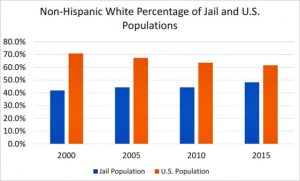 Kevin Drum provides an overview and update of the hypothesis in his detailed post An Updated Lead-Crime Roundup for 2018. In short,
Kevin Drum provides an overview and update of the hypothesis in his detailed post An Updated Lead-Crime Roundup for 2018. In short,
The lead-crime hypothesis is pretty simple: lead poisoning degrades the development of childhood brains in ways that increase aggression, reduce impulse control, and impair the executive functions that allow people to understand the consequences of their actions. Because of this, infants who are exposed to high levels of lead are more likely to commit violent crimes later in life.
He notes further down in the article that
It’s important to emphasize that the lead-crime hypothesis doesn’t claim that lead is solely responsible for crime. It primarily explains only one thing: the huge rise in crime of the 70s and 80s and the equally huge—and completely unexpected—decline in crime of the 90s and aughts. The lead-crime hypothesis is the answer to the question mark in the stylized chart below:
The post has useful graphs for QL based courses, provides an overview of the hypothesis, and the Statistics Projects section of this blog has lead-crime data for projects.

 Kevin Drum keep us updated on the lead crime hypothesis. His latest post on this topic:
Kevin Drum keep us updated on the lead crime hypothesis. His latest post on this topic: